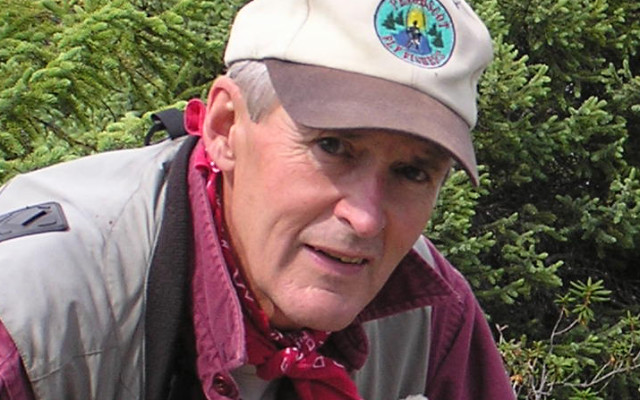
The Hunter’s Moon might signal a big buck is near
By V. Paul Reynolds
For Maine residents, the firearms season for deer begins Saturday, Oct. 31. All other deer hunters can legally start their deer hunt a half hour before sunrise on Monday, Nov. 2.
Many sportsmen count the November deer hunt as the highlight of all of their outdoor passions.
It is a special time. Frosty mornings and quiet moments in a tree stand with hand warmers, a thermos of hot coffee mixed with the anticipation of a big buck in the cross hairs is a deer hunter’s daydream. Or, for the most hardy and driven among the hunt fraternity, the dream is to follow a big track on fresh snow.
And, of course, the Maine deer camp is also the centerpiece of the hunt, part of the heritage and the history. These camps come in all sizes and descriptions and locales, many of them passed along from generation to generation, along with unique histories and huntin’ yarns that get carried on year after year.
A mouse in the corner – a graying one that has been hiding in the food bin for more than a year or two – knows that many of the same old topics get worked over at the card tables year after year. Among them: the best deer gun, the time of day that bucks move, tracking methods, and the Daddy of them all, when is the peak period of the all-important rut?
In general, if you can figure out what time of the month the rut is at its peak, you stand the best chance of catching a buck when he is distracted with his guard down and his focus is not on danger. Since there is only educated guesswork about rut times, mixed with some well-grounded anecdotal evidence, the deer rut can be the subject of spirited debate at deer camp.
There are two clear schools of thought on this subject. The conventional wisdom of highly respected wildlife biologists like Gerry Lavigne is straightforward and has nothing to do with the moon phases. Lavigne will tell you, unequivocally, that the rut always peaks on November 15 year after year, period. This theory holds that the breeding season is guided or dependent upon the length of daylight.
The more romantic theory, if you will, is that the rut, although occurring over a period of 40 days, has a “sweet spot” that lasts about 10 days. This is the lunar theory as articulated by well-known deer researcher Charles Alsheimer from Bath, New York. In a chapter in his book titled “Anatomy of the Rut,” Alsheimer postulates that the whitetail rut is regulated by the lunar cycle.
He theorizes that the Rutting Moon, or the Hunter’s Moon, determines the sweet spot, which begins three days after the Rutting Moon and lasts, as said earlier, about 10 days. Unlike the Lavigne rutting theory, this lunar theory dictates a different rut peak year after year, and takes a little calculation on the hunter’s part. For example, the Rutting Moon is always the second full moon after the autumnal equinox. Last fall the Rutting Moon fell on Nov. 12, which put the sweet spot in mid-November, about the same as Lavigne’s date for the rut peak. This fall, however, the second full moon is 12 days earlier, Oct. 31!
So what does this mean? It really depends upon which theory you elect to go with, lunar cycle or length of day. If you opt for the lunar theory and really want to maximize your odds for catching a rutting buck in deep distraction, you might want to reconsider the date you have set for your hunt week vacation. If Alsheimer is right, the buck of your dreams is more likely to make a mistake in your favor from Nov. 3-13.
One other thing. If you really want to “play the numbers,” and you have a tree stand in good deer country, be in that stand every day at 8 a.m. on Nov. 6,7,9 and 10.
Good luck, and hunt safely!
____________________The author is editor of the “Northwoods Sporting Journal.” He is also a Maine guide and host of a weekly radio program — “Maine Outdoors” — heard Sundays at 7 p.m. on “The Voice of Maine News Talk Network.” He has authored three books; online purchase information is available at www.maineoutdoorpublications.com. or at www.sportingjournal.com. Contact email is: vpaulr@tds.net.